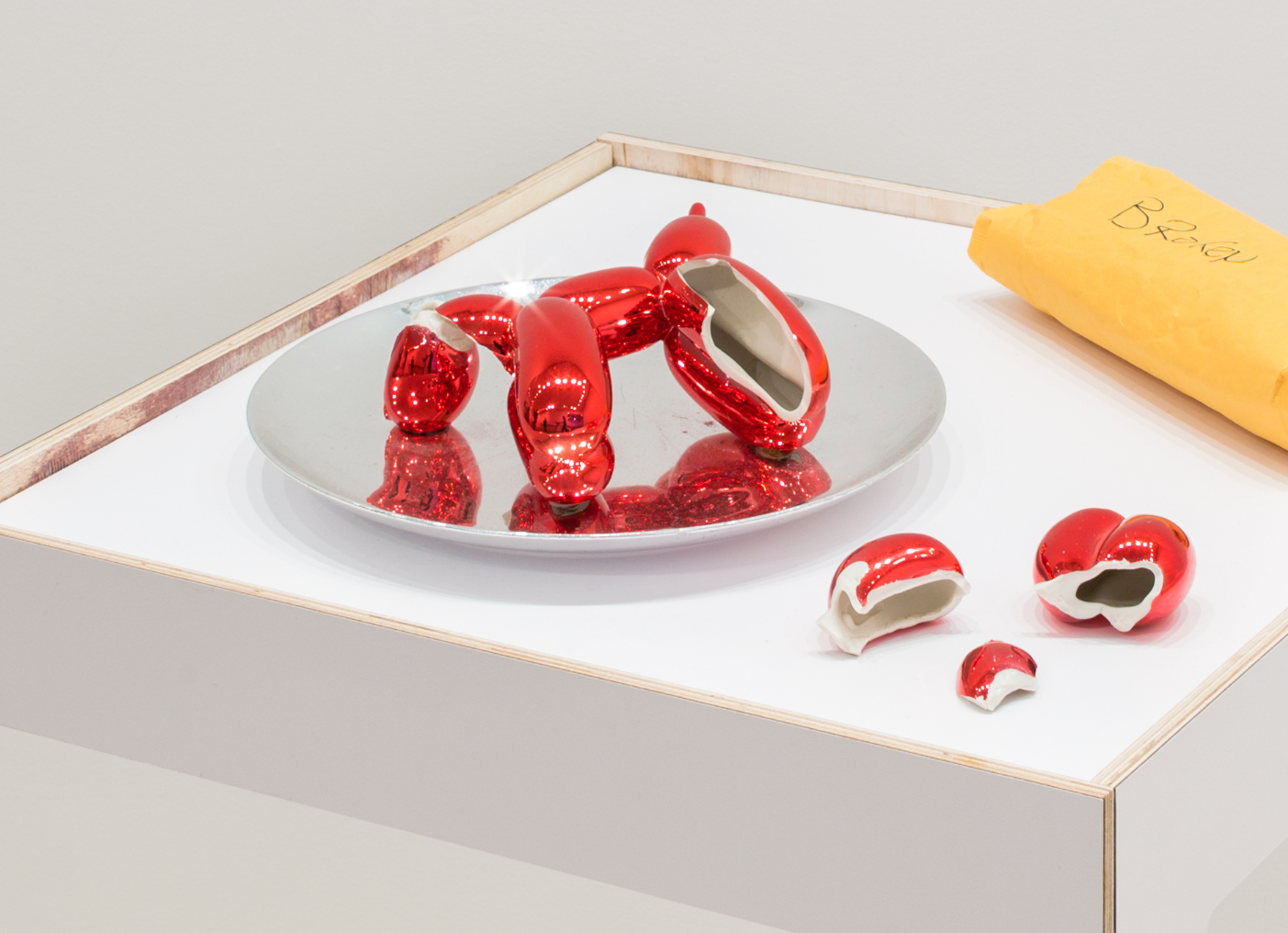Once-valuable artworks cut, smashed, or scraped are the focus of a new exhibit opening at the Salvage Art Institute on April 23, a fictional art museum on the University of Chicago campus. About three-dozen paintings, prints, photographs and sculptures are highlighted as “orphaned” objects, disfigured by accidents. The shiny fragments of a shattered Jeff Koons sculpture, and a gashed Robert Rauschenberg print, are some of the ruins on display in No Longer Art.
Let’s say a canvas is punctured in transit by a forklift. If the estimated conservation bill outweighs the artwork’s market value, then the insurance company declares it a “total loss”—an actual categorization—and forbids it from being traded as art.
That’s where artist Elka Krajewska stepped in. She became fascinated by the “total loss” designation, and founded the Salvage Art Institute in 2012 as a conceptual art project. AXA, an art insurance company, donated a collection of damaged work—a lush charcoal drawing by Linda Bond smeared by a child's handprint, for instance, or a canvas with a mold infestation on the backside, all of which would have otherwise been warehoused. The exhibition debuted at Columbia University that year. Its Chicago presentation at the U of C debuts the university’s newest art venue, inside the Neubauer Collegium for Culture and Society, an interdisciplinary research center.
The exhibit’s curator, Jacob Proctor, says, “Even though their legal status has changed, the works in the exhibition are still extremely interesting, in part because they expose a tension between art and its materials.” But, don’t call them artworks, he says; “they’re now artifacts.”
The works are placed on rolling white easels in the gallery so visitors can move them around and inspect the damage. The setup recalls cadavers on gurneys. “There’s definitely a forensic game at play,” says Proctor. Damage is minor on some pieces, so wall texts and documentation provide clues.
No Longer Art: Salvage Art Institute raises fundamental questions about who determines the value of art. Typically the purview of art critics, museum curators, gallerists, and art collectors, the cultural valuation of art can be mysterious terrain. Enter insurance companies—with their actuaries and metrics—to flatten the score and determine a painting isn’t even worth the canvas it’s painted on. Artists do not often have a say in the “total loss” status of their own work
Beyond the exhibit’s cautionary tale for art collectors and its teachable moments in art conservation, it encourages an existential pursuit of the art market’s casualties, here laid bare.
No Longer Art: Salvage Art Institute opens on Thursday, April 23, 5 p.m.–7:30 p.m., with a reception and panel discussion at the Neubauer Collegium for Culture and Society, 5701 S. Woodlawn. On view through June 26. neubauercollegium.uchicago.edu.



